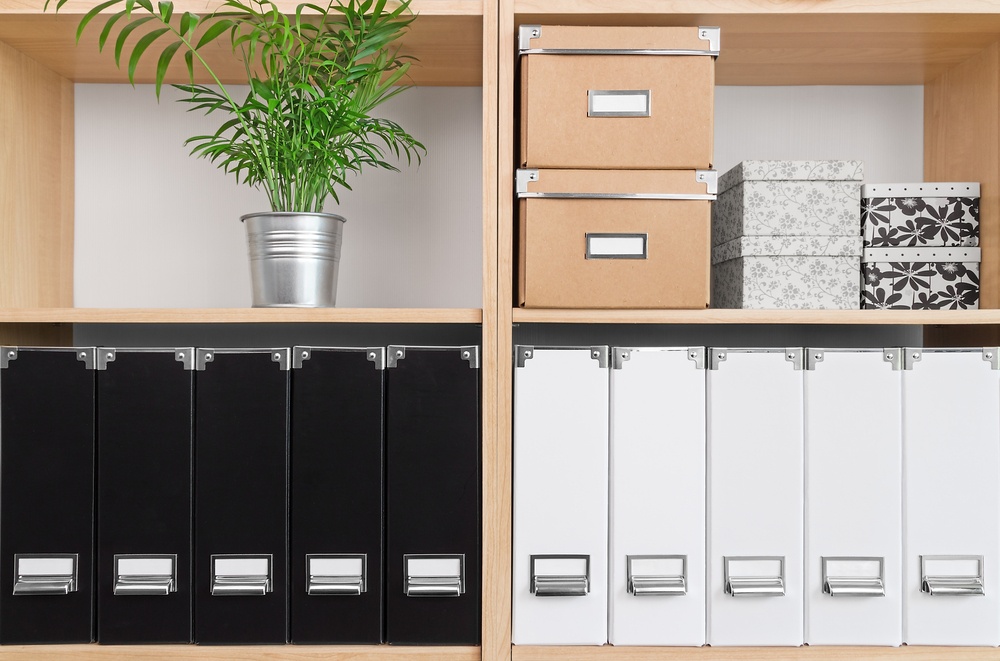A Quick 7-Step Guide To Organising Any Space
 Contributed by
Nathalie Ricaud
April 17, 2016
Contributed by
Nathalie Ricaud
April 17, 2016

Is the clutter around you taking a toll on your sanity? Is the thought of tackling the clutter even more overwhelming? Don’t fret and follow my step-by-step guide to help you regain control of your space … and sanity! I use this approach with my clients to help them organise their home or office, and I have full confidence that it can work for you, too.
1. Define Your Vision For The Space
As for all projects, it’s crucial to define your goals for your organising project, and visualising the outcome is very powerful. It’ll help you decide during the de-cluttering process what belongs to the space and what doesn’t. For example, if you want to make your bedroom a place to rest and relax, it’ll become more obvious to move the TV, desk, toys etc. to other rooms. Focusing on your goal will also keep you motivated when the going gets tough.
As professional organiser Peter Walsh wrote in his book It’s All Too Much, “The key to getting – and staying – organized is to look beyond the stuff and imagine the life you could be living.”
2. Analyse Your Current Space
You want to identify:
- Practices/systems that work for you. Don’t be harsh on yourself, there’s always a little something that works and that can inspire you!
- Problems that you want to solve.
- The root cause of the problems. Maybe you have too much stuff because you’re buying too much, or because you’re having a problem parting with your things, or because somehow you want to hide behind your stuff. Addressing the root cause will help you achieve and sustain your goals.
3. Sort
Gather all the items you own in the category you are dealing with: clothes, toys, books etc. (whether currently located in one room or in different rooms). Take one item at a time and group similar items in categories that make sense to you. For example, clothes could be sorted by occasion (office, casual, evening, exercise, sleep), by type (pants, skirts, dresses, blouses), by colour, or in a combination of these.
At this stage, don’t make decisions on what to keep or toss (that’s the objective of the next step) unless you come across an item that you’re sure you don’t want to keep.
4. Purge
Next, go through each category and decide what to keep, move to a different room, toss, fix, give away, donate, sell and so on. It’s important to do the purging by category, because it’s only when you look at a category as a whole that you can appreciate how much you have and decide how much you should have. At the end of the day, it’s up to you to decide how much to keep. But you should only keep what you use, need and love. According to professional organiser Barbara Hemphill, 80% of what we keep we never use. So be realistic and keep what fits in your storage space – the rest is just clutter.
5. Assign A Home To Each Category
Each category needs to have a dedicated home so that you can easily remember where to find an item and where to put it away. Ideally, the category should be located where the item is being used. Bear in mind that we only use what we see, so keep items most frequently used below eye level and easily reachable. As much as possible, avoid mixing categories within a storage unit. Position similar categories near each other.
6. Containerise
Containerising helps:
- contain categories together, especially small items
- give you visibility on what you have in one category
- set a limit on how much you accumulate in that category
- make retrieving and cleaning easier and faster
Studies have shown that you can reduce the time you spend on housework by 40% by having a de-cluttered and organised home! Worth the time investment, don’t you think?
I’d like to stress that buying containers shouldn’t happen any time before this stage of the process, because it’s only once you’ve de-cluttered that you’ll know how many containers you need, what their size should be, whether they need a lid or not, and so on.
7. Fine Tune
It’s not always possible to get the system right the first time, so a couple of weeks after you’ve finished organising your space, evaluate how well your system has been working and make any changes if necessary.
Get organised and make room for life!
Nathalie










Sorry, the comment form is closed at this time.